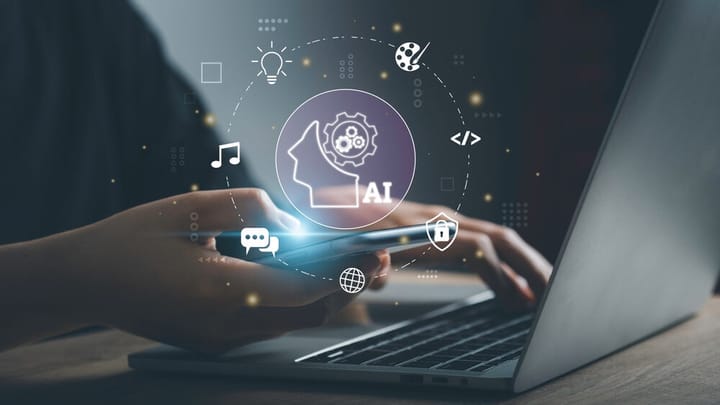AI-Powered Fraud Detection: Safeguarding User Identities
In an age of increasing cyber threats, safeguarding user identities is paramount. AI-powered fraud detection systems employ cutting-edge technology to monitor and protect data in real time. Let's see how it can strengthen your security measures and provide peace of mind to both you and your users.

From identity theft software to document verification systems, AI offers a multi-layered defense strategy against ever-evolving threats. Discover the diverse tools and mechanisms powered by AI that are shaping the future of cybersecurity and safeguarding user identities.
In today's digital ecosystem, the ease of online transactions comes with its own set of vulnerabilities. Individuals, corporations, and financial institutions find themselves in a constant battle against cybercriminals, who deploy ever-more sophisticated methods to pilfer identities and financial resources. The rapid digitization of our lives has inadvertently turned us into targets, rendering conventional security mechanisms increasingly obsolete.
Artificial intelligence emerges as a groundbreaking force in this high-stakes arena. Far from its science fiction origins, AI has matured into a critical tool for identifying and countering the elaborate tactics used by fraudsters. The growth of AI provides a transformative approach to safeguarding our digital lives, offering a robust shield against identity theft and financial fraud.

A Primer on Artificial Intelligence
Artificial Intelligence, commonly referred to as AI, represents a branch of computer science focused on creating systems capable of performing tasks that would traditionally require human intelligence. These tasks include problem-solving, pattern recognition, and decision-making. Unlike traditional software that follows predefined logic, AI systems "learn" from data. They refine their algorithms based on experience, allowing them to tackle new challenges with increased efficiency.
When we delve into the realm of fraud detection, AI's learning capabilities become even more pertinent. Here, machine learning, a subset of AI, plays a pivotal role. Machine learning algorithms can sift through vast datasets, spot anomalies, and flag potential fraudulent activities far quicker and more accurately than rule-based systems.
These algorithms adapt over time, learning from new instances of fraud and becoming more adept at identifying suspicious behavior. Consequently, AI-powered systems promise not just speed and accuracy, but also an adaptability that's crucial in keeping up with evolving fraud tactics. Computers supersede human capabilities when it comes to data interrogation, making AI a crucial technology in today’s digital era.
A Forbes Advisor survey notes that up to 51% of business owners are using AI for cybersecurity and fraud management. This is the second most common application of AI among businesses, with customer service leading the pack.
AI-Driven Tools for Advanced Fraud Detection
From monitoring financial transactions to analyzing behavioral patterns, AI-enabled systems offer a dynamic and layered approach to identifying and countering fraudulent activities. It is a crucial element for promoting data privacy. Below, we’ll look at some of the specific tools available that will let you maximize the benefits of AI.
Identity Theft Protection Software
These programs utilize sophisticated algorithms to monitor a variety of data points: from credit reports and social security numbers to online activities. Any irregularity—such as an unexpected change in location or an unusual transaction—is flagged and the user is immediately notified.
Different options are available, each with their respective features. From recent test we found out they have excellent threat resolution service. Additionally, they can leverage the power of AI to provide maximum security and peace of mind.

Payment Fraud Detection Systems
These are specialized platforms that utilize AI to monitor payment transactions across various channels such as online, mobile, and in-store payments. They employ machine learning algorithms to scrutinize every transaction, assessing risk factors and flagging or blocking potentially fraudulent activities in real-time, such as in the case of credit card fraud.
Behavioral Biometrics Solutions
AI algorithms can analyze unique human activities, such as typing rhythm, mouse movement, and even touchscreen interactions to create a behavioral profile of a user. Any deviations from this baseline behavior can trigger a security alert, offering a non-intrusive way to confirm user identity.
Anti-Money Laundering (AML) Platforms
These AI-driven platforms are designed to detect and report potentially illegal activities that may involve money laundering. They analyze complex relationships between multiple variables like transaction size, frequency, and geographical origin to identify suspicious activities, thereby aiding compliance with financial regulations.
Chatbot Security Assistants
While not strictly for fraud detection, these AI-powered chatbots are designed to educate users about potential scams and security threats. They can also guide users through security protocols and, in some cases, carry out security checks, thereby serving as a first line of defense against fraud.
Document Verification Services
These AI tools automatically inspect and verify the authenticity of documents used in online applications for services like bank accounts or loans. Document verification cross-references the provided information against various databases and uses AI to identify forged or altered documents.
How AI Works in Fraud Detection
Artificial Intelligence in fraud detection operates as an intricate system that excels in analyzing, learning, and adapting. It stands in stark contrast to traditional rule-based systems, which are limited by their static nature.
Data Aggregation and Preprocessing
Data aggregation is about collecting vast amounts of transactional, behavioral, and historical data. Before feeding this data into machine learning models, preprocessing steps such as normalization and feature extraction are performed. This ensures that the data is in a format that the algorithms can effectively analyze.
Machine Learning Algorithms
Central to AI's functionality in fraud detection are machine learning algorithms. These algorithms consume the preprocessed data and begin the task of finding patterns or anomalies. Algorithms such as Decision Trees and Neural Networks are commonly used, each offering unique advantages in identifying various types of fraudulent behavior.
Real-Time Analysis and Prediction
What sets AI apart is its capacity for real-time analysis. As transactions occur, the machine learning models evaluate them instantaneously against learned patterns. If a potential fraudulent action is detected, it can be flagged for further review or automatically halted, thus preventing possible financial loss.
Feedback Loops and Adaptability
When an outcome is determined—be it a true positive, false positive, true negative, or false negative—the model absorbs this as feedback. Algorithms adjust their internal parameters based on this feedback, continually improving their performance.
Integration with Other Tools
AI does not function in isolation; it's often integrated with other technologies like blockchain or rule-based systems to create a comprehensive fraud detection platform. This hybrid approach ensures that the strengths of one system can compensate for the weaknesses of another, creating a more robust overall defense mechanism.

User Notification and Response
Finally, AI systems are often equipped with notification mechanisms that alert users or administrators about suspicious activities. This empowers individuals and institutions to take immediate corrective actions, such as changing passwords or freezing accounts, thereby adding a layer of active human verification to the automated process.
Wrapping Up
Navigating the challenges of today's complex world of online fraud is a tall order. Artificial Intelligence gives us the tools we need to stay ahead of the game. As criminals get more creative, AI-powered systems are getting better and faster at catching them. In this constant tug-of-war, AI is a game-changing ally that helps us protect our digital lives effectively and efficiently.



